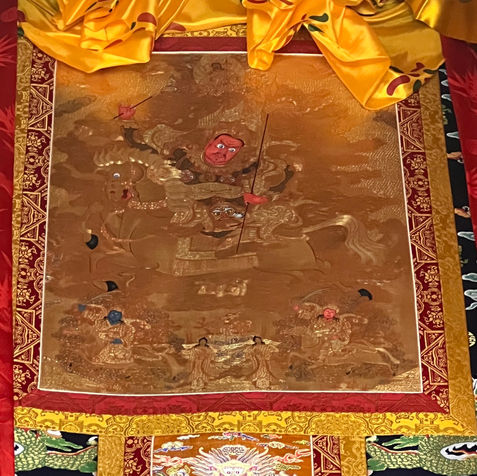King Gesar
of Tibet

Guomariz castles
The history of Guomariz Village dates back over 600 years ago, making it one of the best-preserved ancient castles in the country.
place that Connected with King Gesar
Guomariz village

During my visit to the yogi's temple, a friend of a friend unexpectedly mentioned the existence of a secret King Gesar temple hidden within an ancient village. To be precise, it should be described as an ancient castle rather than an ordinary village, as the castle came first, followed by the village.
Guomariz was originally the site of Litun, one of the four settlements. Before the 28th year of the Ming Wanli era (1600), Litun was divided into Upper Litun and Lower Litun. The upper settlement became Guomariz, while the lower settlement became Gashariz (the ancient Gashariz settlement no longer exists, with only remnants of walls remaining). It is said that the gate of Upper Litun was wrapped in red copper, and thus it was called "Guomariz" in Tibetan, meaning "Red Gate."
The Guomariz Ancient Castle (Litun) is located in Guomariz Village, 7 kilometers north of Tongren County, on the western terrace of the Longwu River, surrounded by mountains and water. The castle was built during the Ming Dynasty as a fortress for military garrison and defense during the era of border reclamation. The castle is rectangular in shape, 200 meters long from east to west and 180 meters from north to south, covering an area of 36,000 square meters.
Currently, 147 households live inside the castle, while 404 households reside outside. In 2006, Guomariz Village was recognized as a "Chinese Historical and Cultural Village." The Guomariz Ancient Castle was originally built using rammed earth construction and served as a military garrison to guard the border.
My friend, who is a well-known thangka painter living inside the village, led me through the castle. The castle is very primitive, with narrow roads. After walking for ten minutes, my friend finally brought me to the secret King Gesar temple and explained that it is not open to the public. It is said that the temple was built by the military at the very beginning of the castle's construction as a protective deity temple for the castle. Later, it became the ancestral temple of Guomariz Village.
Unlike other King Gesar statues I had seen before, the one in the ancestral temple was a wrathful deity. However, instead of holding the usual sword of wisdom in his right hand, he held a forked blade.














